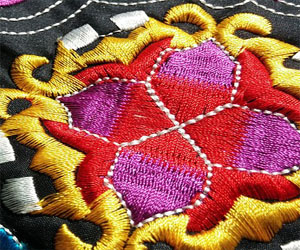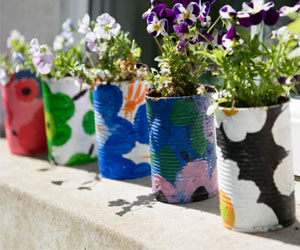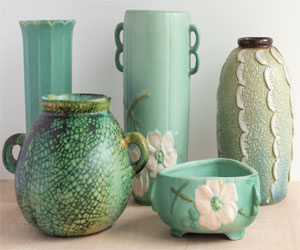


Exploring The Art Of Sewing Techniques

Sewing, a timeless and indispensable craft, is a testament to human ingenuity, creativity, and skill. The art of sewing has evolved over centuries, offering a rich tapestry of techniques that cater to diverse purposes. Whether you're mending a seam, creating a piece of clothing, or pursuing intricate embroidery, sewing techniques form the foundation of a myriad of artistic and practical endeavors.
The Basics: Essential Sewing Techniques
Before delving into advanced sewing techniques, one must master the fundamentals. These are the basic skills that are essential for sewing anything, from garments to home decor:
Straight Stitch: The most fundamental of all sewing techniques, the straight stitch creates a secure line by simply passing the needle and thread through the fabric. It's used for basic seams, hems, and basting.
Backstitch: This technique reinforces seams by doubling back through the previous stitch. It's essential for creating strong, secure joins in fabric.
Zigzag Stitch: The zigzag stitch is used to finish raw fabric edges to prevent fraying. It's also handy for sewing stretch fabrics and creating decorative edging.
Seam Allowance: Understanding the appropriate seam allowance is crucial for constructing well-fitted garments and avoiding unnecessary bulk in seams.
Advanced Sewing Techniques: Once you've mastered the basics, you can explore advanced sewing techniques that offer more creative and functional possibilities:
Gathering: This technique involves stitching multiple rows of long, loose stitches, which are then pulled to create gathers or ruffles in the fabric. Gathering is often used in creating full skirts, puff sleeves, or decorative elements.
Bias Binding: Bias binding is used to finish raw fabric edges, providing a clean and durable edge with the help of strips cut on the diagonal (the bias) of the fabric. It's ideal for curved hems and necklines.
Darts: Darts are folded, stitched seams that provide shape and contour to garments, particularly for a better fit around curves like the bust, waist, or hips.
Blind Hem: The blind hem stitch is used for invisible hems on garments. It creates a nearly undetectable hemline on the right side of the fabric.
Buttonholes: Sewing buttonholes requires precision and skill to ensure buttons can be securely fastened. There are different techniques for sewing buttonholes, including machine-sewn and hand-sewn.
Basting: Basting stitches are long, temporary stitches used to hold fabric layers together during the construction of a garment. They are removed once the final seam is stitched.
Understitching: Understitching involves sewing a line of stitching close to the seam line on the facing side of a garment to prevent the facing from rolling outwards.
Embracing Creativity: Sewing Techniques In Art And Design
Sewing techniques also play a significant role in various creative pursuits:
Embroidery: Embroidery techniques range from the satin stitch for smooth, flat surfaces to complex stitches like French knots and feather stitches that create texture and depth in designs.
Quilting: Quilting combines layers of fabric with precise stitching to create intricate and artistic patterns. Quilting techniques vary from hand quilting to machine quilting.
Appliqué: Appliqué is an art of sewing smaller pieces of fabric onto a larger base to create patterns or designs. It's often used for adding decorative motifs to clothing and home decor items.
Sewing techniques are the building blocks of a craft that has stood the test of time. Whether you're an aspiring fashion designer, a quilter, or a hobbyist, these techniques empower you to create functional and artistic pieces that reflect your imagination and skill. Sewing is more than just a craft; it's an art form that weaves together function and creativity, allowing you to bring your ideas to life, one stitch at a time.
Crafting The Foundations Of A Creative Journey
 Safety First: Safety is paramount in woodworking. As a beginner, familiarize yourself with the proper use of safety gear, such as safety glasses, ear protection, and dust masks. You should also learn how to use tools safely, including saws, chisels, and drills, to avoid accidents and injuries.
Safety First: Safety is paramount in woodworking. As a beginner, familiarize yourself with the proper use of safety gear, such as safety glasses, ear protection, and dust masks. You should also learn how to use tools safely, including saws, chisels, and drills, to avoid accidents and injuries.
Tools Of The Trade: Every woodworker, regardless of their skill level, relies on a set of essential tools. As a beginner, you'll want to start with the basics, which may include a saw, chisels, a mallet, a tape measure, a square, and clamps. Over time, you can gradually expand your tool collection as your skills progress.
Learning The Art Of Joinery: Joinery is the technique of connecting two pieces of wood to form a strong, lasting bond. As a beginner, start with basic joinery methods such as butt joints, lap joints, and dowels. As you become more skilled, you can delve into more complex joinery, such as mortise and tenon or dovetail joints.
Stitching Timeless Craftsmanship
 Historical Roots: The origins of traditional needlework can be traced back centuries, with evidence of embroidered textiles dating as far back as the ancient Egyptians and Chinese dynasties. Throughout history, women (and men) have used their skills in needlework to embellish clothing, linens, and decorative items, often showcasing cultural motifs and symbols unique to their regions.
Historical Roots: The origins of traditional needlework can be traced back centuries, with evidence of embroidered textiles dating as far back as the ancient Egyptians and Chinese dynasties. Throughout history, women (and men) have used their skills in needlework to embellish clothing, linens, and decorative items, often showcasing cultural motifs and symbols unique to their regions.
A Cultural Tapestry: Traditional needlework is a rich tapestry that weaves together the customs, beliefs, and aesthetics of different cultures. From the vibrant colors of Mexican embroidery to the delicate stitches of Japanese sashiko, each style carries a piece of its cultural heritage. It's a means of preserving and passing down the stories of a community, one stitch at a time.
Creating Beauty From Discards
 Environmental Benefits
Environmental Benefits
One of the most compelling aspects of repurposed materials is their positive environmental impact. By upcycling, we reduce the need for new resources, which saves energy and conserves raw materials. This practice significantly lessens the burden on landfills and cuts down on pollution generated during the production of new items.
Resourcefulness And Creativity
Repurposing materials encourages resourcefulness and sparks creativity. When working with limited resources, artists often find innovative solutions to turn discarded items into functional and beautiful pieces. This process can lead to fresh ideas and designs that stand out for their uniqueness.
Artistic Expression And Uniqueness
Repurposed materials are celebrated for their artistic expression and uniqueness. Each piece tells a story, preserving the history and character of the original materials. Whether it's a coffee table made from an old door or a lamp fashioned from discarded industrial equipment, these creations are one-of-a-kind.
A Timeless Connection
 The Romans, too, played a pivotal role in the history of wine. They expanded vine cultivation across their vast empire, introducing new techniques in viticulture and winemaking. The famous phrase "in vino veritas" (in wine, there is truth) emerged from Roman culture, emphasizing the way wine could loosen tongues and reveal one's innermost thoughts.
The Romans, too, played a pivotal role in the history of wine. They expanded vine cultivation across their vast empire, introducing new techniques in viticulture and winemaking. The famous phrase "in vino veritas" (in wine, there is truth) emerged from Roman culture, emphasizing the way wine could loosen tongues and reveal one's innermost thoughts.
Medieval Monasteries: Throughout the Middle Ages, wine remained a significant part of European culture. Monasteries became centers of wine production and preservation. Monks carefully cultivated vineyards and perfected the art of winemaking, leading to the creation of some of the world's most renowned wine regions, such as Bordeaux and Burgundy.
Exploration And Trade: As European explorers set out to conquer new lands, they brought vines with them to cultivate wine in their new colonies. Wine became a valuable trade commodity, driving exploration and colonization. Spanish missionaries, for instance, planted vineyards in California, paving the way for the Napa Valley wine region.
Finding Clarity In A Noisy World
 Personal Growth: By contemplating your life and experiences, you can set goals, make plans, and track your progress more effectively. Quiet reflection is a valuable tool for personal development and self-improvement.
Personal Growth: By contemplating your life and experiences, you can set goals, make plans, and track your progress more effectively. Quiet reflection is a valuable tool for personal development and self-improvement.
Now, let's explore how to incorporate quiet reflection into your daily life:
Set Aside Time: Schedule specific time each day for quiet reflection. This could be as brief as a few minutes or longer, depending on your preferences and availability.
Choose A Peaceful Environment: Find a quiet and comfortable place where you won't be disturbed. It might be a corner of your home, a park, or a quiet room in your workplace.
Disconnect: Put away electronic devices during your reflection time. Turn off notifications and resist the urge to check your phone, emails, or social media.
Breathe: Start your reflection with deep, calming breaths. This simple exercise can help you relax and transition into a state of mindfulness.
 Handbuilding: Handbuilding is one of the most fundamental and versatile techniques in pottery. It involves using the hands to shape the clay. This can be done through techniques such as pinching, coiling, and slab-building. Pinching entails squeezing and forming the clay, coiling is the process of building up the form with clay ropes, and slab-building involves using flattened sheets of clay to construct objects. Handbuilding allows for a great deal of artistic expression and often results in unique, irregular forms.
Handbuilding: Handbuilding is one of the most fundamental and versatile techniques in pottery. It involves using the hands to shape the clay. This can be done through techniques such as pinching, coiling, and slab-building. Pinching entails squeezing and forming the clay, coiling is the process of building up the form with clay ropes, and slab-building involves using flattened sheets of clay to construct objects. Handbuilding allows for a great deal of artistic expression and often results in unique, irregular forms.
Wheel-Throwing: Wheel-throwing, or throwing, is a technique where the potter shapes clay on a rotating wheel. The wheel's motion allows for even and symmetrical forms, making it ideal for creating functional items like bowls, cups, and vases. Potters use their hands and various tools to manipulate the clay as it spins, drawing upon their skill and precision to achieve the desired shape and texture.
Coiling: Coiling is a method where clay ropes or coils are stacked and joined together to create a three-dimensional form. It is one of the oldest pottery techniques, with historical examples dating back thousands of years. Coiling provides both strength and flexibility, making it suitable for constructing larger vessels and sculptural pieces.
Slab-Building: Slab-building entails rolling out flat sheets of clay and cutting them into shapes that are assembled to create an object. It allows for the creation of more geometric and angular forms. Artists can also add texture and design elements to the slabs before assembly, resulting in visually striking pottery.
A Time-Honored Craft With Modern Relevance
 Connection To Tradition: Needlework connects us to our cultural heritage. Many techniques and patterns have been passed down through generations, preserving age-old traditions. This connection to tradition adds a layer of historical richness to the craft.
Connection To Tradition: Needlework connects us to our cultural heritage. Many techniques and patterns have been passed down through generations, preserving age-old traditions. This connection to tradition adds a layer of historical richness to the craft.
A Sustainable Hobby: Needlework is often sustainable and eco-friendly. Crafters can create practical, long-lasting items that reduce the need for disposable, mass-produced alternatives. This aspect of needlework aligns with a modern focus on sustainability and eco-conscious living.
Versatility: Needlework can take on various forms and serve diverse purposes. From functional items like clothing, home decor, and accessories to fine art and wall hangings, the versatility of needlework allows for a wide array of projects.
To explore the world of needlework and incorporate it into your life, consider the following steps:
Choose Your Craft: Start by selecting a specific form of needlework that resonates with you. Whether it's embroidery, cross-stitch, knitting, or crochet, choose a technique that aligns with your interests and goals.
Gather Materials: Acquire the necessary materials, such as fabric, thread, needles, and any other specific tools related to your chosen craft. High-quality materials can greatly enhance the final result.